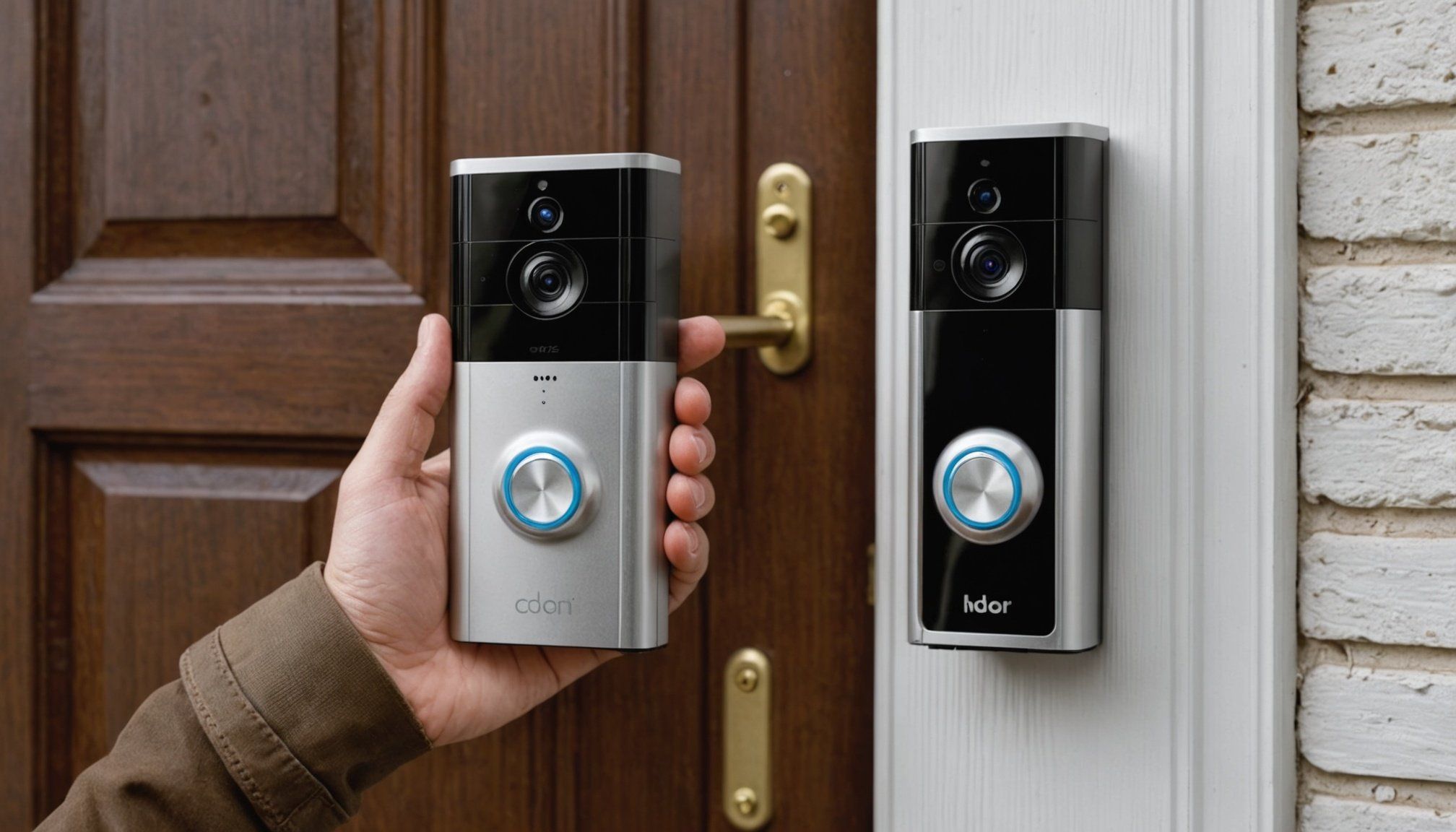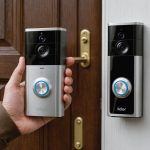Understanding Smart Doorbell Technology
Smart doorbells have revolutionised home security with their innovative features and easy-to-use functionality. They typically come equipped with motion sensors, video recording capabilities, and two-way audio communication. These features allow homeowners to see and communicate with visitors remotely, adding an extra layer of security.
A significant advantage of smart doorbell technology is its seamless integration with existing home security systems. Most smart doorbells fit into larger security ecosystems, syncing with apps and hub devices. This ensures that security alerts are centralised, allowing real-time notifications directly to a user’s smartphone or tablet.
Additional reading : Revolutionize Your Smart Home: Effortlessly Control and Monitor Your Water Heater via Smartphone
The importance of connectivity options cannot be overstated. Smart doorbells predominantly use Wi-Fi or Bluetooth to maintain communication with other devices. Wi-Fi is favoured due to its ability to support video streaming and real-time updates, providing reliable connectivity over longer distances. Bluetooth, while more limited in range, offers faster pairing and lower energy consumption, making it a viable backup connectivity option.
In summary, smart doorbell technology enhances home security, provides user-friendly functionality, and offers multiple connectivity options. This makes it an essential tool for modern safety-conscious homeowners.
Also to read : Transform Senior Care with Innovative Smart Home Technology: Harness Your Smartphone as the Essential Tool
Preparing for Installation
When setting up a smart doorbell, being well-prepared is crucial for a smooth installation process. First, gather the essential tools and materials. Typically, you’ll need a screwdriver, a drill, and anchors, especially if you plan on mounting the doorbell on brick or masonry. Ensure you have any additional hardware included with your smart doorbell package.
Next, assess the compatibility of your home Wi-Fi and smartphone. A strong, stable Wi-Fi connection is necessary, as smart doorbells rely on it to stream video and send alerts. A minimum speed of 2 Mbps is recommended for efficient operation. Make sure your smartphone supports the doorbell’s companion app, an integral part of its functionality.
Identifying the best installation location is vital for optimal performance. Position your smart doorbell at an accessible height, typically 4 to 5 feet off the ground, to capture clear images of visitors’ faces. Ideally, it should provide a wide field of view and be within range of your Wi-Fi network to prevent connectivity issues. Consider any obstructions such as walls or large metallic objects that might interfere with the signal.
Step-by-Step Installation Guide
Setting up a smart doorbell can seem daunting, but breaking it down into steps simplifies the process.
Initial Setup
Begin by creating an account with the doorbell’s manufacturer. This ensures access to essential features and customer support. Next, download and install the companion app on your smartphone. This app is the command centre for your smart doorbell, allowing you to customise settings and receive alerts. Connect the doorbell to your home Wi-Fi network. A stable connection is crucial for effective video streaming and notifications.
Hardware Installation
Mounting the smart doorbell securely is crucial for functionality and security. For wired models, ensure proper wiring to maintain a reliable power source. If using a battery-operated model, ensure the power options are sufficient for your needs. Correct installation ensures optimal performance and longevity of your device.
Configuration and Settings
Lastly, adjust settings within the app to tailor notifications and alerts. This can be personalised according to your preferences, ensuring you only receive important notifications. Additionally, link your smart doorbell with other smart home devices. This integration enhances your home’s overall security ecosystem, making your environment safer and more efficient.
Troubleshooting Common Issues
Setting up a smart doorbell may occasionally come with hurdles. Addressing connectivity issues is often the first step in trouble-shooting. If your doorbell fails to connect, ensure your Wi-Fi is functioning correctly. A router reset can sometimes resolve connection problems. For persistent issues, moving the router closer or using a Wi-Fi extender could help improve signal strength.
Video quality concerns may arise if you notice lagging or poor resolution. Ensure your internet speed is sufficient and the bandwidth is not overly used by other devices. Upgrading your internet plan might be necessary for optimal performance, especially if streaming video is frequently disrupted.
For wired models experiencing power issues, inspect the wiring connections to make sure they are secure and correctly installed. Loose wires can prevent the device from functioning appropriately. With battery-operated models, check that the batteries are charged and properly seated. Strong performance depends on a reliable power source, so always keep spares at hand.
By understanding these common problems and their solutions, you can ensure your smart doorbell works efficiently, keeping your home secure and tech-savvy.
Recommendations for Popular Smart Doorbell Models
Choosing the right smart doorbell can significantly enhance home security. Understanding the landscape of the market’s leading models can help identify which features are most beneficial for your needs. Brands like Ring, Nest, and Arlo dominate the market, offering varied functionalities and price points to cater to different user preferences.
When comparing popular smart doorbells, it’s crucial to focus on their core features. Many models provide high-definition video, motion detection, and seamless app integration, ensuring users receive timely notifications and access to recorded footage. Some models highlight enhanced features like facial recognition and package detection, appealing to tech-savvy consumers.
Pricing is another decisive factor. Models vary from budget-friendly options to high-end devices packed with advanced features. For users prioritising affordability, models like the Ring Video Doorbell Wired provide essential functions without breaking the bank. On the other hand, high-end models like Nest Hello offer a polished design and advanced software at a premium cost.
Ultimately, recommendations hinge on individual user needs. Whether security-focused or budget-conscious, the array of smart doorbell models ensures a fitting choice for everyone. Assess your requirements carefully to identify the most suitable option.
Visual Aids and Resources
Utilising visual guides during the setup of a smart doorbell can greatly enhance comprehension and ease the installation process. Many users find step-by-step installation videos invaluable, offering real-time demonstrations that clarify complex steps. Platforms like YouTube host a multitude of these videos, providing detailed visuals that align with the written instructions typically found in user manuals.
Exploring additional online resources can also be beneficial. Community forums dedicated to home security and smart technology provide platforms for sharing experiences and tips. Engaging with these communities can offer insight into common installation challenges and innovative solutions. Users often post detailed instructions, personal modifications, and troubleshooting tactics that may not be covered in the standard guidelines.
Resource tools such as compatibility checkers and wiring tutorials also serve as excellent aids. These tools ensure the smart doorbell’s seamless integration with existing home setups before installation begins. By leveraging visual aids and online resources, users can confidently install their smart doorbells, knowing they have access to comprehensive support and information if needed. This approach promotes a smoother, more efficient installation experience for all homeowners.
Frequently Asked Questions
When considering smart doorbell technology, common inquiries revolve around installation and compatibility. One frequently asked question is: “Will a smart doorbell work with my current security system?” Yes. Most smart doorbells are designed for seamless integration with existing systems. They sync effortlessly with security apps to centralise notifications, enhancing your overall security setup.
Another common inquiry concerns connectivity: “Do I need a specific internet speed for my smart doorbell?” A minimum speed of 2 Mbps is recommended. This ensures uninterrupted video streaming and reliable alerts. For more complex setups involving multiple devices, consider upgrading for optimal performance.
Users often wonder about troubleshooting lesser-discussed issues. “What if my doorbell’s video quality is inconsistent?” Beyond ensuring sufficient internet speed, focus on Wi-Fi router placement. Location affects signal strength. A strategic adjustment can resolve many connectivity challenges.
Lastly, many seek advice on models. “Which smart doorbell is best for budget constraints?” The Ring Video Doorbell Wired is praised for its affordability without sacrificing essential features. Always align your choice with personal preferences and requirements for an informed buying decision. Engaging with community experiences can also provide valuable insights.











